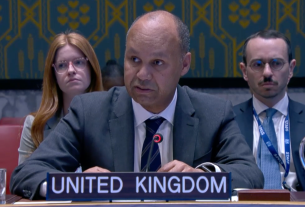DEVELOPING STORYDEVELOPING STORY,
Latest launches come three days after Pyongyang said it tested a ‘high-thrust solid-fuel motor’ engine for ballistic missiles.
Video Duration 02 minutes 18 seconds
North Korea has fired two ballistic missile towards the sea off the east coast of the Korean Peninsula, according to South Korean and Japanese officials.
South Korea’s Joint Chief of Staff said the launches occurred from the Tongchang-ri area in North Pyongan Province on Sunday morning but gave no further details.
The Japanese Prime Minister’s Office also confirmed the launch of the first missile.
Japan’s broadcaster NHK said it landed outside the country’s exclusive economic zone (EEZ), citing unnamed government officials.
The latest launches comes three days after Pyongyang said it tested a “high-thrust solid-fuel motor” engine, which experts said would allow quicker and more mobile launches of its ballistic missile arsenals.
The test of the new missile engine was overseen by North Korean leader Kim Jong Un and conducted at the Sohae Satellite Launching Ground in Tongchang-ri, which has been used to test missile technologies, including rocket engines and space launch vehicles, according to state media.
In recent months, North Korea has test-fired a barrage of nuclear-capable ballistic missiles including last month’s launch of its developmental, longest-range liquid-fuelled Hwasong-17 ICBM, which is designed to carry multiple warheads and has been dubbed the “monster missile”.
The exact status of North Korea’s nuclear attack capability remains in secrecy as all its intercontinental ballistic missile tests in recent years have been carried out at a steep angle to avoid neighbouring countries.
Some experts speculate North Korea already has functioning nuclear-tipped missiles that can hit the entire territory of the United States, given the number of years it has spent on its nuclear programme.
But others say the country is still years away from acquiring such weapons and has yet to publicly prove it has the technology to protect warheads from the harsh conditions of atmospheric re-entry.
The US and South Korea have expanded their regular military drills and pushed to further bolster their combined defence capability in the face of Pyongyang’s advancing nuclear programme.
North Korea has threatened to use nuclear weapons pre-emptively in potential conflicts with the US and South Korea, while the Pentagon has warned Pyongyang that nuclear weapons use “will result in the end of that regime”.



